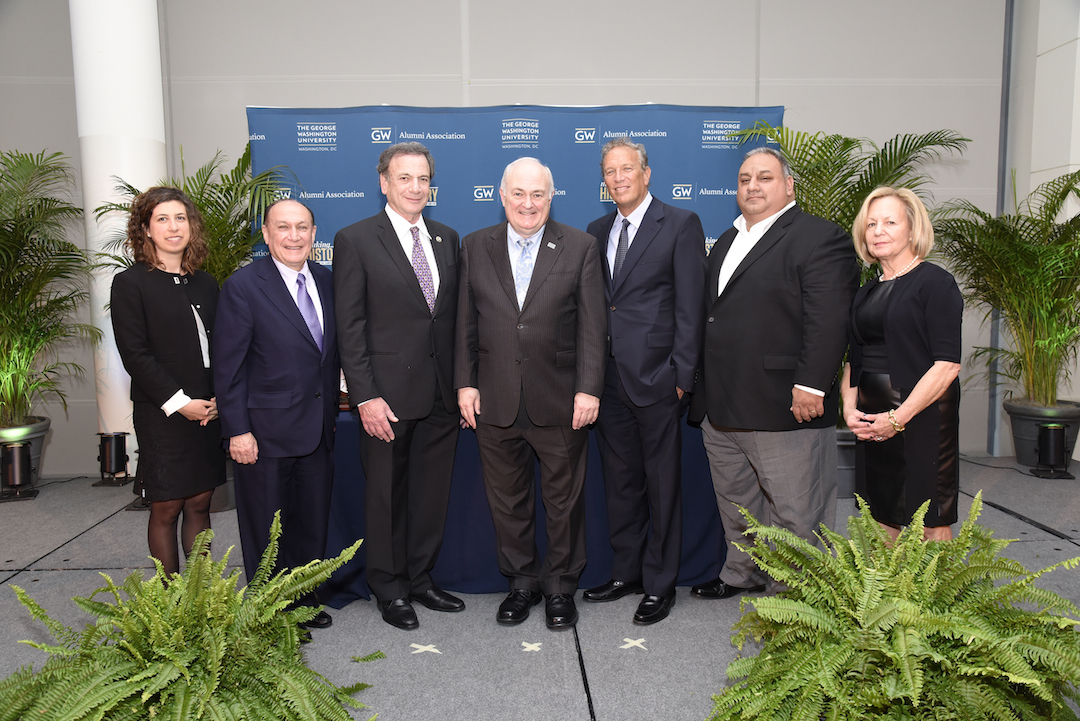By James Irwin
Maxine Freund came to the George Washington University in the early 1970s searching for an academic program that would help tackle some of the issues facing children at educational risk.
She found it at the Graduate School of Education and Human Development, where a small, passionate group of faculty was designing one of the earliest programs focused on high-risk children and their families—kids with mild-to-severe disabilities, mental health problems, autism and substance abuse issues.
“They were part of a small group of committed individuals across the country that were advocating for equal education for all children,” said Dr. Freund, M.A. ’73, EdD ’81. “GW faculty, students and alumni were leading the way, preparing educators to work with children at risk and with disabilities from infancy to adulthood.”
In time, Dr. Freund would join that group on the GSEHD faculty, eventually becoming associate dean for research and external relations. Thursday, she and five other alumni—including trustees Jay Katzen, B.A. ’67, M.D. ’72, and Mark Shenkman, M.B.A. ’67—were honored by the GW Alumni Association (GWAA) at the 55th annual Alumni Outstanding Service Awards for their contributions to the university community.
“This event really does highlight one of the university's core values, and that is service,” George Washington President Steven Knapp said. “I’ve been impressed by the depth and breadth of service of all of our awardees to their alma mater and to their fellow Colonials.”
Dr. Knapp provides opening remarks at the event Thursday. (Dave Scavone/For GW Today)
A connection to GW
Like Dr. Freund, Gilbert Cisneros’ longstanding service to GW has roots in educational opportunity. He and his wife, Jacki, donated $7 million last summer to create the GW Cisneros Hispanic Leadership Institute, which provides college scholarships to students and offers a pre-college program to high school juniors.
“This place is very important to me,” Mr. Cisneros said. “I’m glad you recognize what we’re doing—creating opportunity for low-income students, opportunity for Latinos to get a world-class education like I did.”
The honorees shared personal stories Thursday related to their service and GW’s growth. Richard Frisch, B.A. ’78, remembered his time as a student in the Columbian College of Arts and Sciences and his work on the School of Media and Public Affairs (SMPA) Advisory Council and SMPA Career Advisor Network.
“I had a great time at GW, worked on Capitol Hill and with some network news organizations,” he said of his internship opportunities. “What I did way back then is very common today.”
Pascale Dumit, B.S. ’03, M.S. ’05, recalled her path from undergraduate student and Presidential Administrative Fellow to her leadership positions with the GW Engineering Alumni Association and GWAA. Every step of the way, she said, she noticed alumni support.
“If you ask why I volunteer, really it’s a no-brainer,” she said, “Giving back became part of my DNA because that’s the culture here, it’s the way we operate at GW.”
Pascale Dumit, center, along with Jim Quinlan, left, vice president of awards for the GW Alumni Association Board of Directors, and SEAS Dean David Dolling. (Dave Scavone/For GW Today)
People and places
Dr. Katzen, who has supported GW as an individual donor and whose family foundation has contributed substantial resources to many local charities and organizations, including the School of Medicine and Health Sciences’ Katzen Cancer Research Center, marveled at the capital improvements on campus since his time as a student. He remembered an anatomy class on the top floor of the old medical school building, located off campus at 14th and H streets NW.
“It was rumored that the one elevator was hoisted by a Quasimodo-type character pulling on a cord,” he said, drawing laughter. “Of course, the medical school is now a state-of-the-art institution. Other additions to the campus have been so significant, most recently the Textile Museum and the historic Corcoran Building, the Public Health School and the School of Engineering and Applied Science.”
It is the work being done inside those buildings, Dr. Katzen said, that lifts GW. Cancer research in Science and Engineering Hall, under the leadership of Eduardo M. Sotomayor, is one example he cited.
The people make GW a special place, said Mr. Shenkman, who in 2014 donated $5 million in support of the GW Career Services Enhancement Initiative and the F. David Fowler Career Center.
“Beautiful buildings do not make a great university,” he said. “It is the quality, the character, the dedication of the university’s leadership, faculty, staff and students that embodies a great university.”


